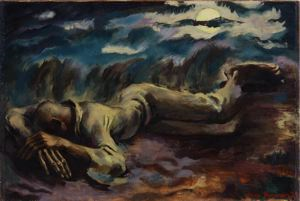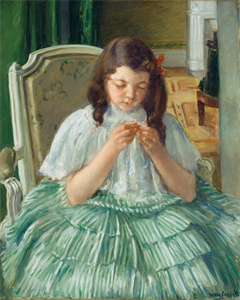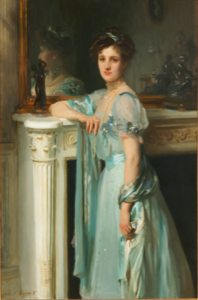
Charles Shannon
American, 1914–1996
The Lover" was inspired by Charles Shannon’s experience of rural black Southern culture. While he portrayed the people with whom he lived and worked, he maintained that his themes came from his imagination. At the time of his retrospective in 1981, Shannon recalled painting "The Lover." “I had a studio on the second floor of a servant’s house near downtown Montgomery. One night in the fall I began working on a sketch in charcoal—the image just came to me.” He embarked on the canvas the next morning and had finished it by the end of the day. With its elongated figure and dark, brooding coloration, "The Lover" demonstrates Shannon’s highly expressive style. It conveys his empathy for the suffering of the rural poor through the integration of the tortured figure, with its attenuated limbs and bony fingers, into an environment of ominous portent demonstrated in the moonlit, blustery sky. This subject closely relates Shannon’s work to the Regionalist and the Mexican muralist schools of painting that flourished in the 1930s. "The Lover" won third prize at the exhibition of contemporary painting at the San Francisco International Exposition of 1939.
American Paintings from the Montgomery Museum of Fine Arts, 2006, cat. no. 91, p. 214.
American, 1914–1996
The Lover
1937
Object Type:
Painting
Creation Place:
North America, American, Alabama
Dimensions:
30 1/4 in. x 45 in. (76.84 cm x 114.3 cm)
Medium and Support:
Oil on canvas
Accession Number:
1986.0006
Credit Line:
Montgomery Museum of Fine Arts Association Purchase and Gift of The Blount Foundation, Algie H. Neill, Fred Richard, Babette L. and Charles H. Wampold, Charlotte Weil, Jane and S. Roberts Blount, Martha and Tranum Fitzpatrick, Charlotte and George Goodwyn, Joan and Frank Loeb, Martha and John Cameron, Mary Lynne and Herbert F. Levy, Patricia and Al J. Sansone, Eleanor and Eugene Ballard, Kittie and Jack Norment, Edna M. Rosen, Hilda and Julian Slager, Melinda and Barry Wilson, Priscilla and Quentin Crommelin, and Anonymous Donor
The Lover" was inspired by Charles Shannon’s experience of rural black Southern culture. While he portrayed the people with whom he lived and worked, he maintained that his themes came from his imagination. At the time of his retrospective in 1981, Shannon recalled painting "The Lover." “I had a studio on the second floor of a servant’s house near downtown Montgomery. One night in the fall I began working on a sketch in charcoal—the image just came to me.” He embarked on the canvas the next morning and had finished it by the end of the day. With its elongated figure and dark, brooding coloration, "The Lover" demonstrates Shannon’s highly expressive style. It conveys his empathy for the suffering of the rural poor through the integration of the tortured figure, with its attenuated limbs and bony fingers, into an environment of ominous portent demonstrated in the moonlit, blustery sky. This subject closely relates Shannon’s work to the Regionalist and the Mexican muralist schools of painting that flourished in the 1930s. "The Lover" won third prize at the exhibition of contemporary painting at the San Francisco International Exposition of 1939.
American Paintings from the Montgomery Museum of Fine Arts, 2006, cat. no. 91, p. 214.
Keywords
Click a term to view the records with the same keyword
Portfolio List
Click a portfolio name to view all the objects in that portfolio
This object is a member of the following portfolios:
Your current search criteria is: Keyword is "PH" and [Object]Nationality is "American" and [Object]Century is "Twentieth Century".

 by Artist (4)
by Artist (4)

